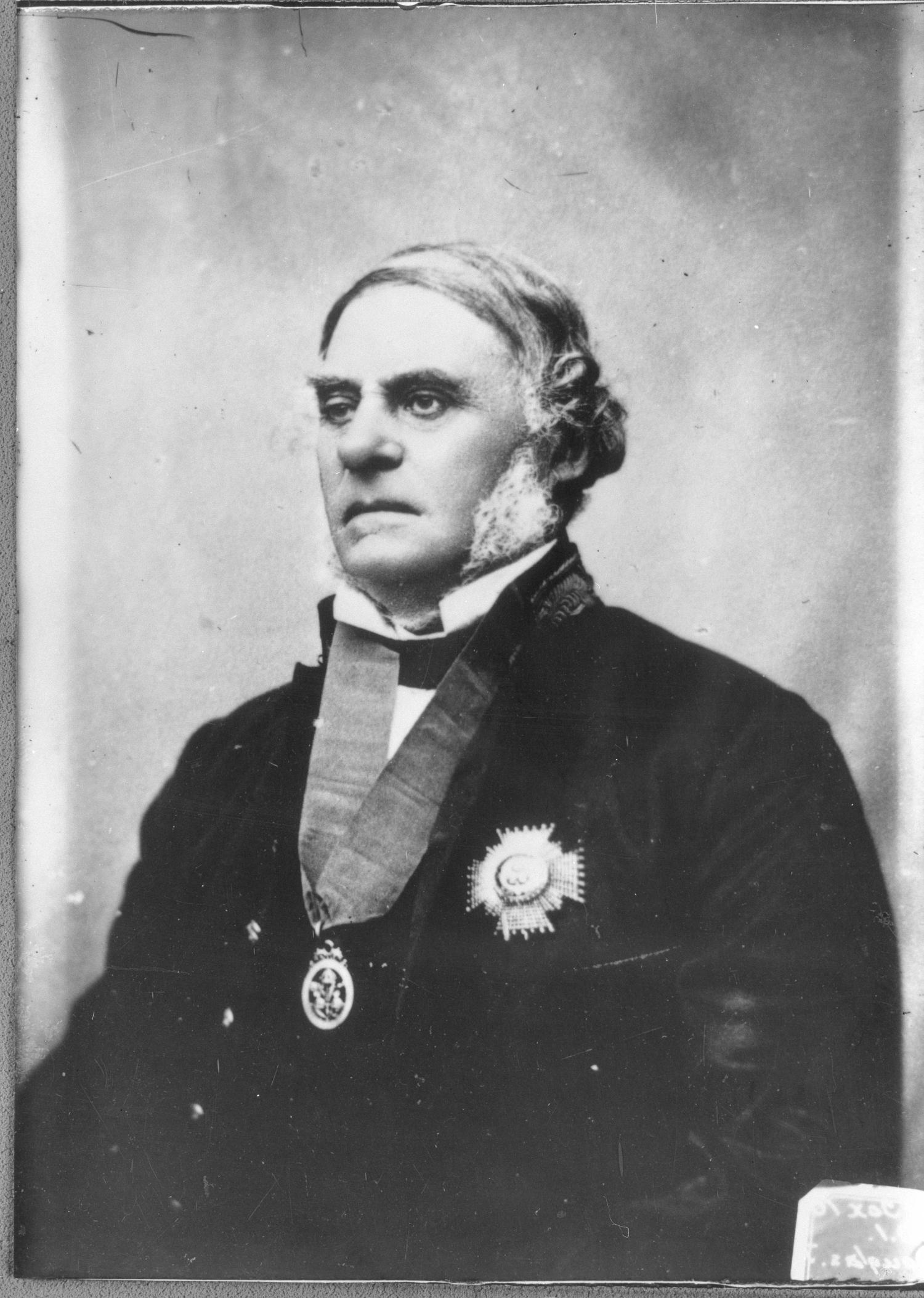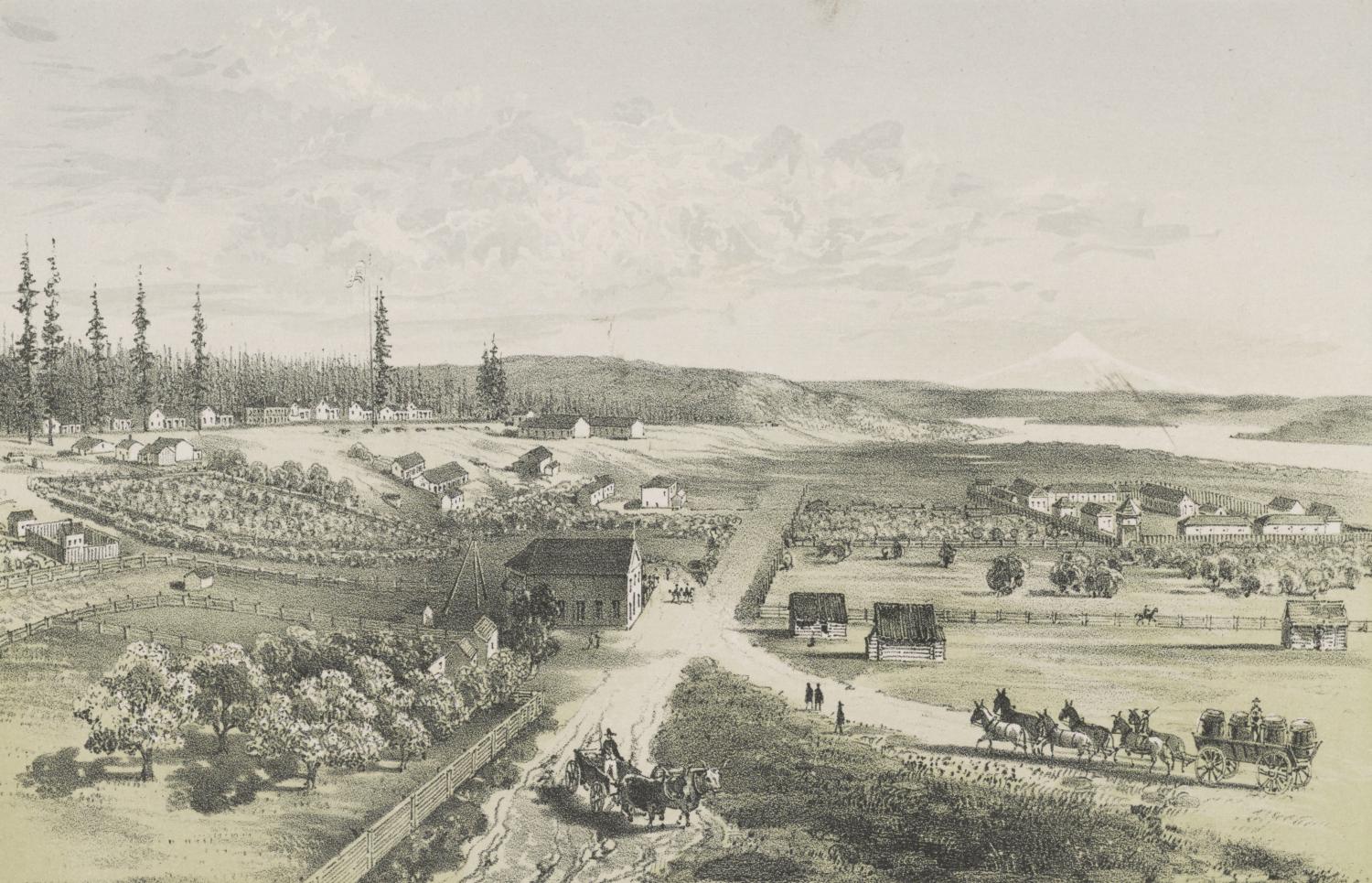Douglas Enters the Fur Trade
B.C.’s founding father starts off as a teenage fur trader
Date: 1819
Before serving as a colonial governor, James Douglas spent more than three prosperous decades in the lucrative fur-trading industry. Resolute and admired by his colleagues, Douglas had risen to chief factor of the Hudson’s Bay Company before turning 40. He would hold that position, overseeing operations across the vast Columbia District, for nearly two decades, including seven years as governor of the Colony of Vancouver Island. During this time, the imperially-minded Douglas not only expanded the company’s activity in the Pacific Northwest, but he warded off American annexation at a time when Britain’s control in the region appeared up in the air.
Born in 1803 in Dutch-held Guiana, Douglas’s story is a unique one. His father, John Douglas, was a Scottish sugar plantation owner and his mother, Martha Ann Ritchie, a Barbados-born woman of Créole descent. At 9-years-old, he travelled to Scotland for school, never to return to what is now Guyana, a coastal country in northeast South America, nor see his mother again. A few years later, Douglas boarded a ship to the East Coast of what became Canada and entered the fur trade at age 16. He initially worked for the North West Company in present-day Ontario and Saskatchewan before becoming an accountant for the HBC after it absorbed his previous employer. In 1826, Douglas arrived at Fort St. James, northwest of Prince George. Though he briefly flirted with exiting the fur trade in the winter of 1827 — and was reportedly “bent on leaving the country” by the following spring — the HBC convinced him to stay by significantly increasing his salary.
In April 1828, Douglas married Amelia Conolly, the daughter of William Connolly, the HBC’s then-chief factor, and Miyo Nipy, a Cree woman. Douglas’s affection for his wife helped him endure the many isolating years he would come to spend at the HBC’s rugged outposts. In 1842, he described the “vapid monotony” of life as a fur trader as “perfectly insufferable,” but made easier “by the many tender ties, which find a way to the heart.” The couple had 13 children together, though only six reached adulthood.
According to HBC Governor George Simpson, Douglas was a “stout, powerful, active man of good conduct and respectable abilities.” However, Simpson also spoke of the young man’s “furiously, violent” temper. That temperament nearly got him killed during an 1828 conflict with Dakelh people, though his life was ultimately spared by the legendary Chief Kw’eh. Fearing further clashes with the Dakelh chief, the HBC transferred Douglas and his family to Fort Vancouver, the headquarters of the HBC’s Columbia District, in 1830. They remained in what is now Vancouver, Washington, until moving to Fort Victoria when Vancouver Island became a colony in 1849.
Douglas began “rising fast in favour,” according to one fur trader in 1831. By 1835, the company had promoted him to a chief trader role. Four years later, Douglas became chief factor, overseeing all operations west of the Rocky Mountains, from Alaska to Mexican-controlled California. Douglas steered the company through a period of tremendous change. In 1843, anticipating Fort Vancouver to soon become part of American territory, Douglas oversaw the establishment of Fort Victoria on Lekwungen territory at the southern tip of Vancouver Island. The settlement became the HBC’s new Pacific headquarters when the Oregon Treaty was signed in 1846. By 1851, Douglas had become the Colony of Vancouver Island’s second governor, though he retained his role as chief factor for another seven years.
Sources:
1. Adams, John. James Douglas (1803-1877) in Oregon. The Oregon Encyclopedia, www.oregonencyclopedia.org/articles/douglas_james/pdf/.
2. Harris, Cole. The Native Land Policies of Governor James Douglas. BC Studies, Summer 2012, ojs.library.ubc.ca/index.php/bcstudies/article/view/182681.
3. McKelvie, B.A. “Sir James Douglas: A New Portrait.” The British Columbia Historical Quarterly, Apr. 1943, www.library.ubc.ca/archives/pdfs/bchf/bchq_1943_2.pdf.
4. Nelson, Jay. “‘A Strange Revolution in the Manners of the Country’: Aboriginal- Settler Intermarriage in Nineteenth-Century British Columbia.” Regulating Lives Historical Essays on the State, Society, the Individual, and the Law, UBC Press, 2003, www.ubcpress.ca/asset/12458/1/9780774808866.pdf.
5. Ormsby, Margaret A. Douglas, Sir James. Dictionary of Canadian Biography, www.biographi.ca/en/bio/douglas_james_10E.html.
6. Ormsby, Margaret A. Sir James Douglas. The Canadian Encyclopedia, 14 Feb. 2018, www.thecanadianencyclopedia.ca/en/article/sir-james-douglas.
7. Perry, Adele. Colonial Relations: The Douglas-Connolly Family and the Nineteenth-Century Imperial World. Cambridge University Press, 2015, www.cambridge.org/core/books/colonial-relations/0C53CC368838512AB9067EDAB4F01397.
8. Sage, W. N. (Walter Noble). “Sir James Douglas and British Columbia.” University of British Columbia Library, The University of Toronto Press, open.library.ubc.ca/collections/bcbooks/items/1.0375702#p54z-3r0f:bent%20.




